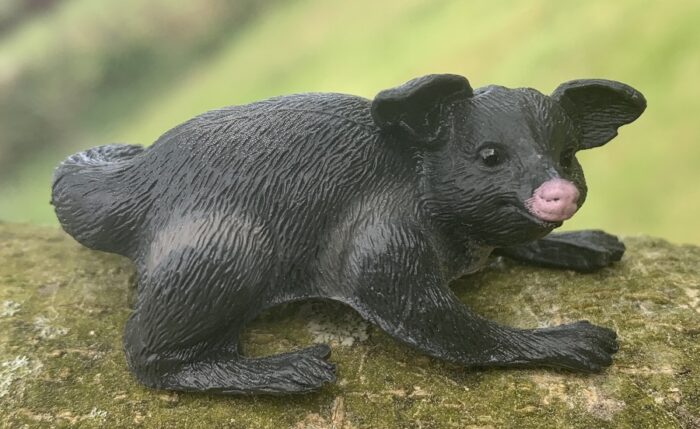The Safari Ltd. wallaby was released in 2016 and sculpted by Doug Watson. Although currently available on Safari’s website it has been perpetually on sale for some time, which likely means it has been retired and is being cleared out. Let’s take a closer look at it and see if it’s worth grabbing before it’s gone.
Classification: Marsupials
Tasmanian Devil (Wildlife by Mojö Fun)
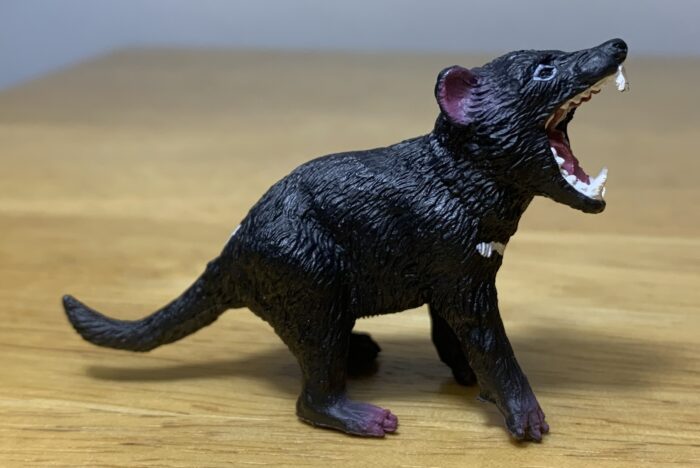
With the extinction of the thylacine the Tasmanian devil (Sarcophilus harrisii) claimed the title of the largest extant marsupial predator, weighing up the 18 lbs. (8 kg.) in the case of males. Not a terribly impressive size for the largest marsupial predator, I’ve had cats that outweigh the Tasmanian devil!
Black-flanked Rock-wallaby (Animals with Superpowers by Yowie Group)

Last week we looked at a macropod that makes its home in the trees, this week we’re looking at one that prefers to dwell among the rocks. The black-flanked rock wallaby (Petrogale lateralis) is a species of rock-wallaby found among rocky outcrops and cliffs in small, scattered populations throughout western Australia.
Matschie’s Tree-kangaroo (Wild Safari Wildlife by Safari Ltd.)

Tree-kangaroos of the genus Dendrolagus are unique and fascinating animals in that they’re the only macropods adapted for an arboreal lifestyle. Indeed, while they move about awkwardly on land, they are quite agile in the trees. They possess a number of adaptations for living this lifestyle including broad hindfeet, long claws, dexterous hands, patches of rough skin on the hands and feet for gripping, and tails that are proportionally longer than those of their terrestrial counterparts, which allows for greater balance.
Yellow-bellied Glider (Baby Animals by Yowie Group)
Wombat (Wild Safari Wildlife by Safari Ltd.)
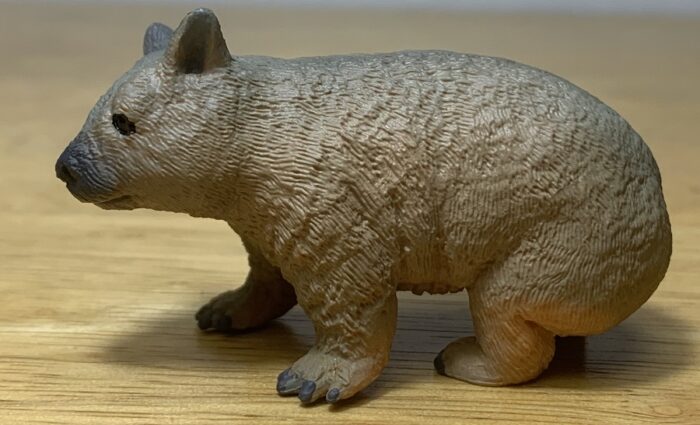
Wombats are a group of strong and stout marsupials from Australia that belong to the Vombatidae family. In many respects they are convergent with ground squirrels and other burrowing rodents found elsewhere in the world, living in extensive burrows that they excavate themselves and feeding on grasses, plant roots, and other low growing vegetation.
Virginia Opossum (unknown)
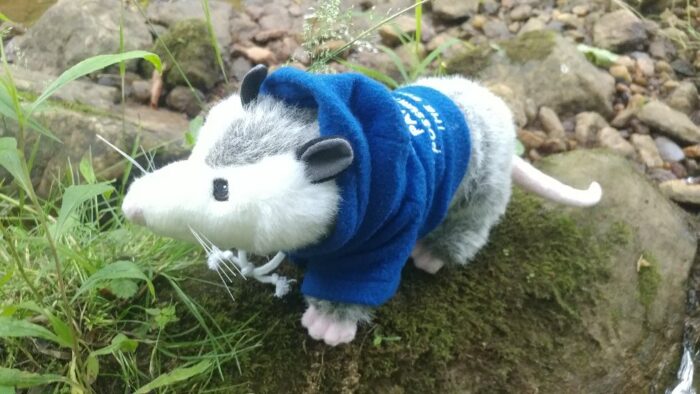
The Virginia opossum (Didelphis virginiana) is not an animal that you would expect to find an exhibit dedicated to at the zoo, but it is a fascinating North American animal that most of us probably have some familiarity with. Interestingly, opossums do not “play dead,” as many people say, implying a conscious choice, but rather enter a catatonic state when frightened by a predator, and anal glands produce an odor resembling the stink of a decomposing dead body.
Tasmanian Devil (Wild Safari Wildlife by Safari Ltd.)
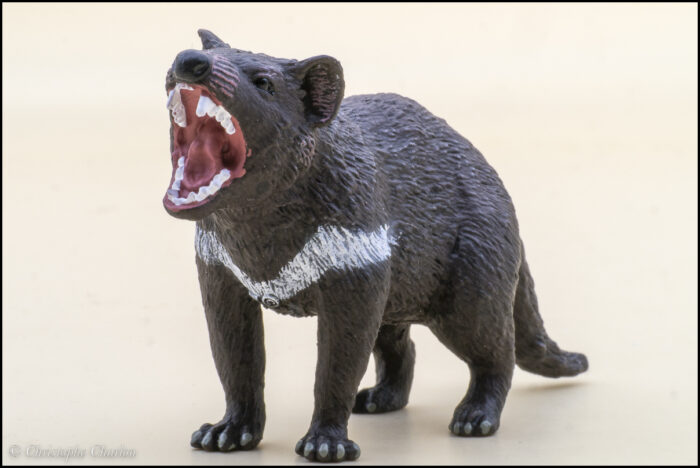
Review and images by Kikimalou; edited by bmathison1972
The Tasmanian devil (Sarcophilus harrisii) is the largest carnivorous marsupial still alive. About the length of a Corgi, with a stocky body, a large head full of teeth, and a tail about half the length of its body. The coat is black with, most of the time, white markings on the neck and on the rump at the base of the tail.
Australian Continent TOOB (Safari Ltd.)

In addition to being a country, Australia is also a continent, but the continent of Australia is not just composed of Australia itself. The Australian continent includes mainland Australia, Tasmania, New Guinea, the Aru Islands, the Ashmore and Cartier Islands, and most of the Coral Sea Islands as well as a smattering of other islands.
Koala (Southern), Pair (Noah’s Pals by Caboodle! Toys LLC)
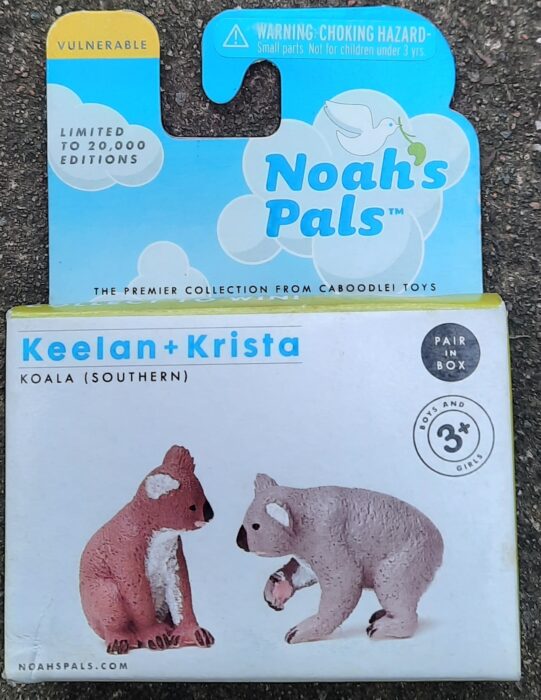
Dropbears. The deadliest mammals in the outback, dropping down on unsuspecting prey!! This terrifying creature……. is not real, but it does make for a fun way to mess with people. The real animal is the laid back Koala (Phascolarctos cinereus), a eucalyptus eating marsupial in Australia. There are a few subspecies of this creature, with the Southern being the largest, found in South Australia and Victoria.
Thylacine (Southlands Replicas)

Review and images by Suspsy; edited by bmathison1972
Alas, less than five years after its promising debut, the animal toy company known as Southlands Replicas is no more. But while it did exist, it produced many superb renditions of Australian fauna, including the tragically extinct thylacine (Thylacinus cynocephalus)..
Red Kangaroo, male 2021 (Wildlife by CollectA)
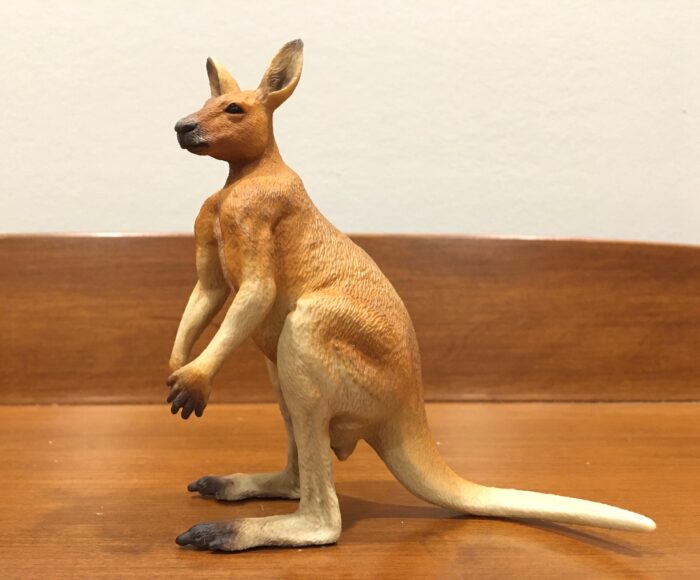
Review and images by Suspsy; edited by bmathison1972
For a male red kangaroo (Osphranter rufus), the journey from adorable joey to towering boomer centres mainly around one thing: the ritualized fighting known as boxing. Only the victors win the privilege of mating rights, and as such, battles between boomers can be extremely violent and ugly.





